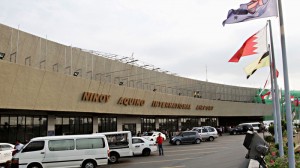Naia radar breaks down as ‘Mario’ stalls flights
The radar system of Ninoy Aquino International Airport (Naia) bogged down on Friday after its power source caught fire apparently due to a lightning strike, prompting aviation authorities to limit aircraft traffic.
The breakdown lasted for eight hours and added to the problems arising from the cancelation or diversion of more than 70 flights due to Tropical Storm “Mario.”
The Civil Aviation Authority of the Philippines (CAAP) started disallowing takeoffs and landings at 3:57 a.m., except for Airbus 319s, Boeing 737s and other planes that have area navigation (RNAV) capability.
Rodante Joya, CAAP chief financial officer, said CAAP personnel earlier saw the power source of the radar on fire.
Initial findings indicate that the fire was caused by a lightning strike accompanying the monsoon rains enhanced by Mario early Friday, despite the four Naia terminals being equipped with lightning arresters to prevent such disruptions.
The radar system was restored at 11:23 a.m.
Still, more flights had to be canceled in the afternoon due to strong winds and heavy rains in Metro Manila.
In an advisory, the Manila International Airport (MIAA) said eight international flights were diverted to the Mactan-Cebu International Airport and Clark International Airport, while 70 domestic flights were canceled. Niña P. Calleja















